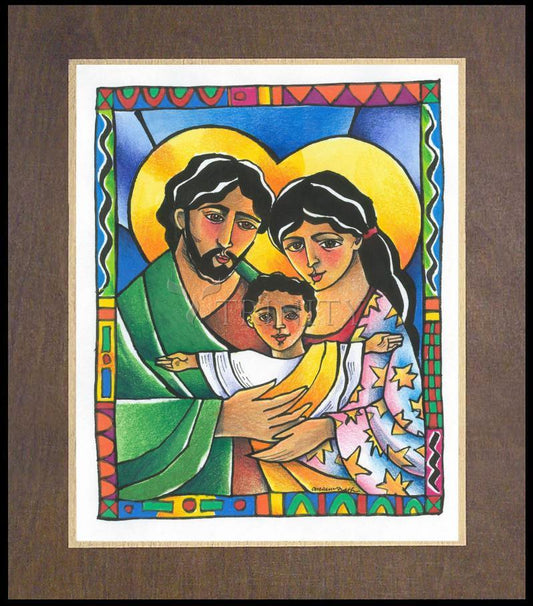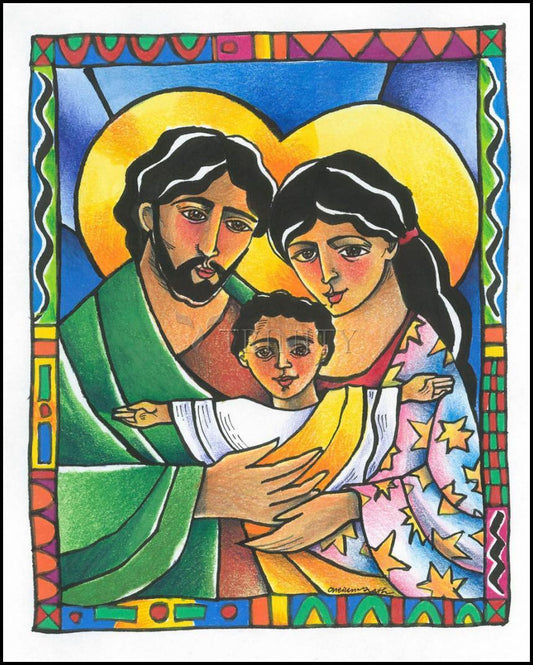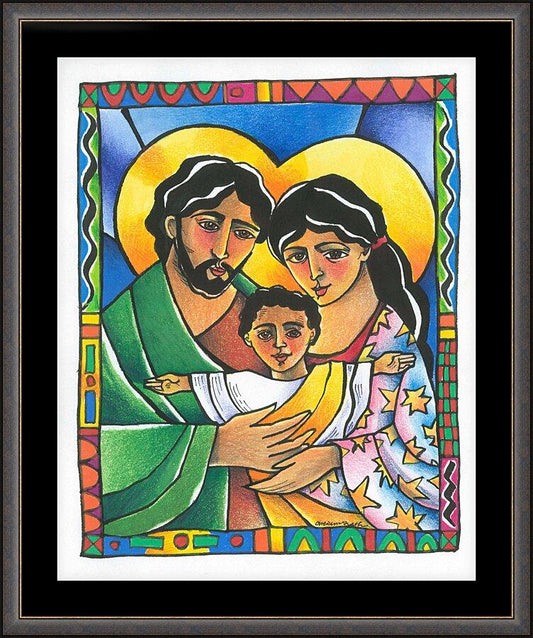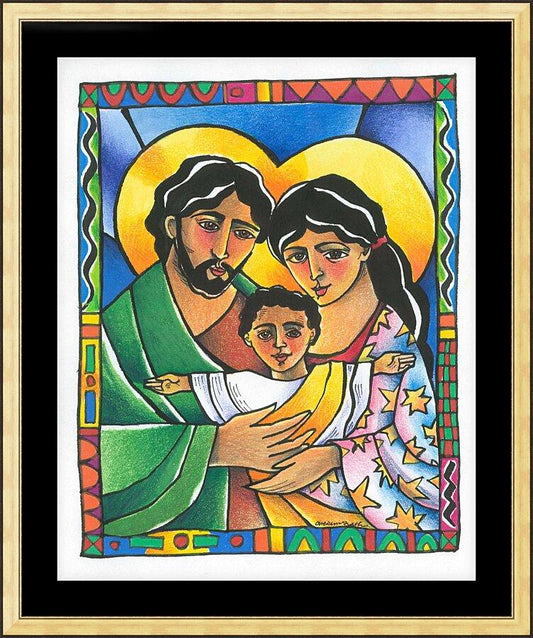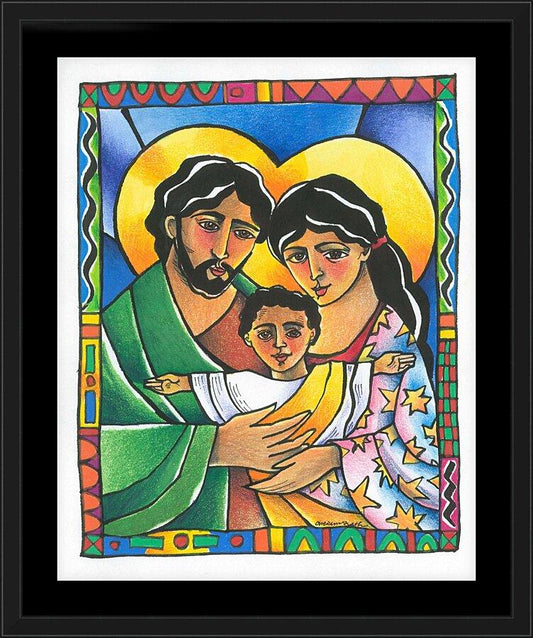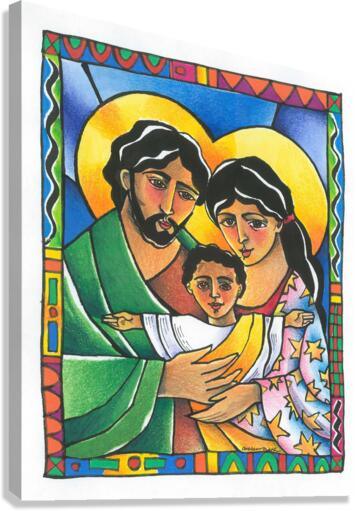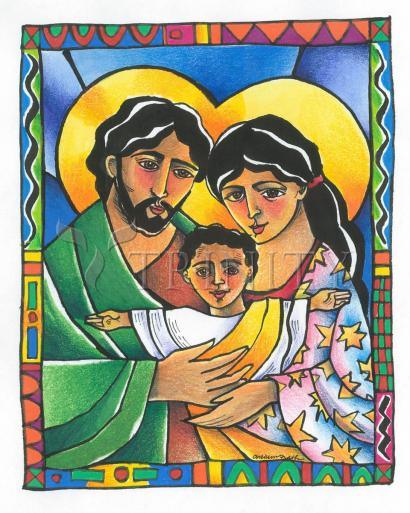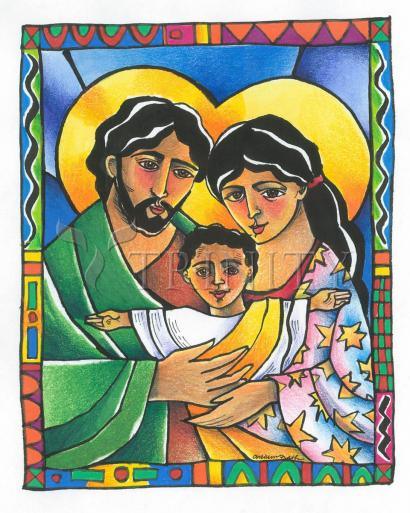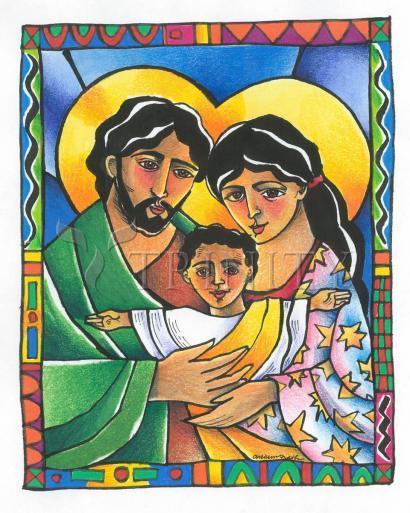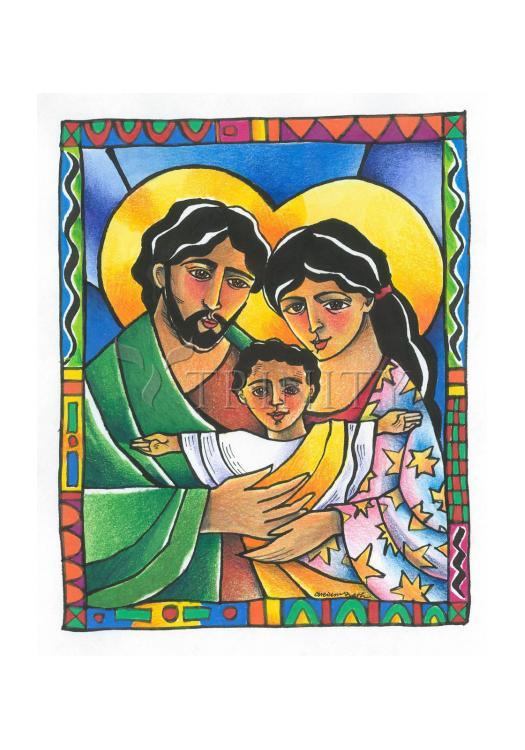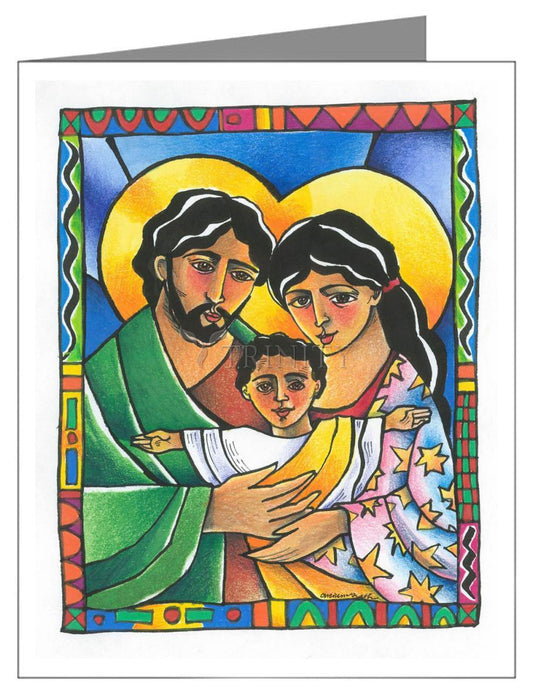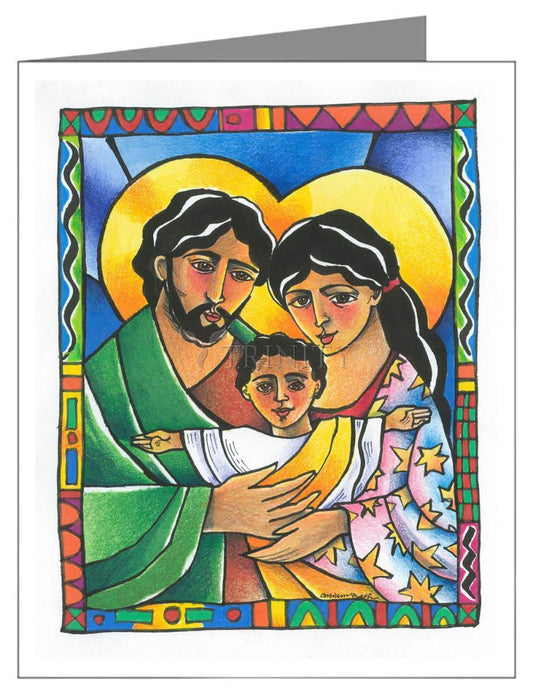The Holy Family consists of the Child Jesus, the Virgin Mary, and Saint Joseph. Veneration of the Holy Family was formally begun in the 17th century by Saint François de Laval, the first bishop of New France, who founded a Confraternity.
The Gospels speak little of the life of the Holy Family in the years before Jesus' public ministry. All that is known are the sojourn in Egypt, the return to Nazareth, and the incident that occurred when the twelve-year-old boy accompanied his parents to Jerusalem. The parents were apparently observant Jews, making the pilgrimage to Jerusalem every year with other Jewish families (Luke. 2:41).
The Feast of the Holy Family is a liturgical celebration in the Catholic Church in honor of Jesus of Nazareth, his mother, the Blessed Virgin Mary, and his foster father, Saint Joseph, as a family. The primary purpose of this feast is to present the Holy Family as a model for Christian families. Since the 1969 revision of the General Roman Calendar, the feast is celebrated on the Sunday within the Octave of Christmas, the Sunday between Christmas and New Year's Day (both exclusive), or when there is no Sunday within the Octave (if both Christmas Day and the Solemnity of Mary, Mother of God are Sundays), it is held on 30 December, a Friday in such years. It is a holy day of obligation only if it falls on a Sunday.
The feast was instituted by Pope Leo XIII in 1893 and set on the Sunday within the Octave of the Epiphany; that is to say, on the Sunday between January 7 through January 13, all inclusive (see General Roman Calendar of 1960). The 1962 Roman Missal, whose use is still authorized, incorporates the General Roman Calendar of 1960, which has the celebration on that date.



